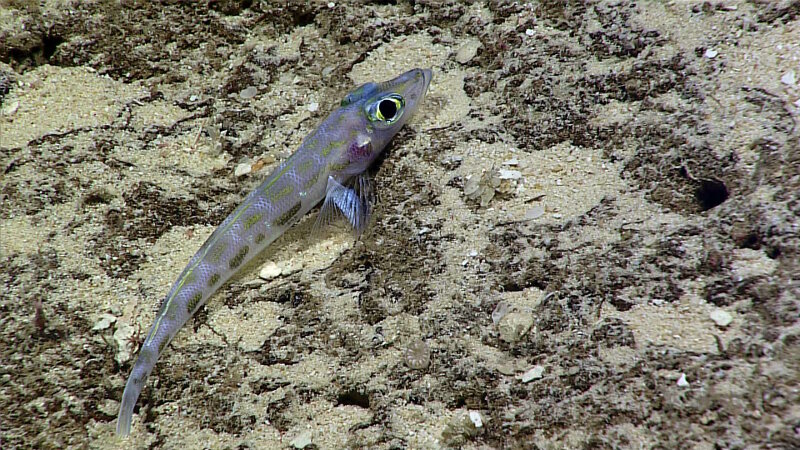

This duckbill fish (family Percophidae) was found at approximately ~275 meters depth. The golden-yellow spots identify the fish as potentially Chrionema chryseres. Its large eyes suggest that it is a visual predator. At these depths, light is scarce, so animals like this fish have developed special visual adaptations to make out their prey in the dim, downwelling light. One common adaptation is large eyes. As the size of the eye increases, the size of the retina, the light receptor, also increases, resulting in a more light-sensitive eye. The more efficient a visual predator's eye becomes, the more successful it will be at hunting in this twilight zone.